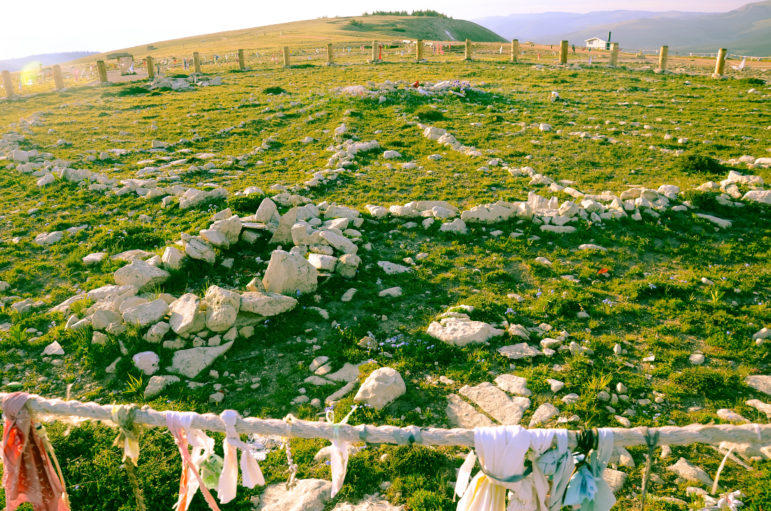
CODY, WYO. — Modern stargazers have a host of sophisticated options for locating and tracking celestial bodies, from charts and books to telescopes and smart phone apps. In fact, the smartphones that run such sophisticated astronomy apps have far greater memory and processing power than the computers that charted a path for Apollo astronauts to reach the moon.
But early inhabitants of the greater Yellowstone region may have relied on their own technological tool to chart the stars and track events like the summer solstice, according to one researcher who presented her findings to a packed house Thursday at the Buffalo Bill Center of the West.
Ivy Merriot, a Bozeman, Mont.-based writer focused on indigenous astronomy, theorizes that Native Americans used a series of stones arranged like a spoked wheel to understand, remember and predict astronomical events.
Merriot has spent a decade studying the Medicine Wheel, a centuries-old site on Medicine Mountain near Lovell, Wyo. Merriot posits that early cultures used the Medicine Wheel not only as a cosmic observatory, but also as a kind of Rosetta Stone and mnemonic device that helped pass down astronomical knowledge to later generations.
Research by others conducted over the last several decades suggests that the 80-foot diameter wheel of limestone rocks in the Bighorn National Forest served a range of uses dating back hundreds of years or more. It may have been a site for vision quests, camping, medicinal plant gathering and prayer.
But that same research also shows that spokes on the 9,640-foot elevation wheel align on important astronomical dates with bright landmark stars like Rigel, Aldebaran and Sirius. The wheel has 28 spokes, which could tie to the 28-day lunar cycle, Merriot said. The spokes and moon serve as a kind of night clock that can chart with precision the passage of time as the heavens appear to swirl with the earth’s rotation.
Early cultures also used stories and folklore to connect the stars and constellations above to the stones below, all as a way to remember and teach important knowledge, Merriot said. Knowing when the days were getting shorter or longer, how to navigate the landscape by the stars or when seasonal weather patterns were likely to change were all hugely important. And that all could be predicted by the stars.
“Because of where and how the spokes turn, they’re going to line up with different things in the sky at different times,” Merriot said. “And the 28 different units are not evenly spaced, because items in the sky are not evenly spaced.”
“Cultures all over the world have divided the night sky into 28 sections so they can track everything,” she said. “It’s really a magic number.”
No one knows for sure who built the Medicine Wheel. Some estimates say it is 500 to 1,500 years old, but Merriot believes it was created more than 5,000 years ago. A lack of artifacts at the site has made dating it based on cultural eras or carbon dating difficult.
Merriot made a series of observations over many days and nights and on key dates like the summer solstice, then used astronomical software to chart the historic positions of the sun and stars over thousands of years.
Merriot believes a spoke that almost aligns with a sighting stone on a ridge line 4 miles away at sunrise on the summer solstice would have lined up perfectly 3,200 years before the Common Era.
Other cultures, including ancient Polynesian seafarers, have long used circular star charts to study, memorize and teach navigation by the stars, Merriot said, and similar wheels have been found across North America.
Connections between the stars, sacred sites and folklore run deep, Merriot said. Her latest research explores potential connections between indigenous astronomy, the Medicine Wheel and petroglyphs across the Bighorn Basin.
“Going back over time, our stories are powerful, and full of science,” she said.
Contact Ruffin Prevost at 307-213-9818 or [email protected].
